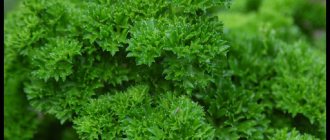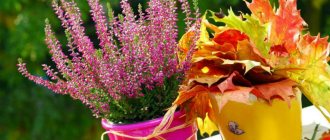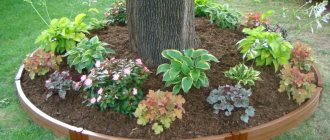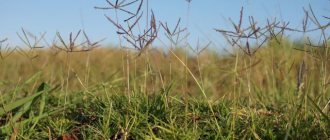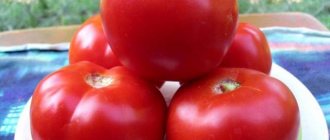What is the source of weeds?
If cultivated plants appear in a garden or vegetable garden thanks to humans, then weeds arise on their own. They reproduce throughout the season and thrive in almost any conditions. These harmful plants can appear in you in different ways:
- From the soil. The fact is that in any case it contains spores of many weeds, which for the time being are in a dormant state. But, as soon as external conditions undergo some changes (for example, it rained), they immediately break through the soil and make themselves felt.
- Through organic fertilizers, which hardly anyone can do without when growing vegetables and fruits.
- Through low quality planting material. Therefore, purchase it only from time-tested sellers and specialized retail outlets.
- The wind is an excellent carrier of seeds of enemies of cultivated plants. All it takes is one impulse to turn an ideal area into an ideal haven for weeds.
Beautiful “aggressors” for the garden and flower beds
There are many plants that easily conquer territory and displace not only weeds, but also other crops. At the same time, they remain a beautiful decoration of the garden, which allows you to create original flower beds. Another advantage of such flowers is their minimal maintenance. Most of them are unpretentious to growing conditions and grow actively.
These aggressor flowers look very beautiful:
- Sedum is caustic. A ground cover plant that can grow in poor soils. It quickly covers the flowerbed with a thick carpet, spreading beyond its boundaries. From the second year it blooms with small yellow inflorescences.
- Hosta. Can grow in both sun and shade. With dense plantings, not a single weed grows under the bushes.
- Dicentra. Lush bushes grow quickly and bloom in an original way.
- Variegated warbler. It grows everywhere and quickly drowns out all its neighbors.
- Periwinkle. Nothing will grow through its thick dark green carpet, and lilac flowers will decorate the garden until autumn.
Why are weeds so objectionable?
How can I remove them once and for all? Nobody knows, even agronomists and scientists involved in breeding do not know. Why do parasitic plants displease everyone so much:
- They take away what is not meant for them. This refers to fertilizers and fertilizing. After all, weeds get about 50% of all this “yummy.” At the same time, cultivated plants suffer terribly from lack of nutrition, and this is a direct path to a decrease in yield.
- Parasitic plants are a refuge for harmful insects, where they multiply and multiply in an excellent way.
Which grass to use in the war against weeds
In this case, you should choose among an unpretentious and durable plant that can protect you for years, not just one season. The optimal solution is Irish moss. In fact, it is something between moss and grass and is an excellent substitute for a regular lawn.
Moss densely covers the entire surface and does not allow weeds to break through. In addition, it is completely unpretentious in care and has a pleasant aesthetic appearance, especially in the summer, when it is time to bloom. In summer, such a lawn is covered with small white flowers.
What is weed control?
Weeds are excellent opportunists. They are not afraid of natural phenomena such as drought, frost, rain and wind. Even after mechanical impact, they have the ability to quickly recover and continue their “dirty work.”
On a note! Sometimes even burning weeds in the fall does not always give good results in this unequal struggle.
Maybe plant something that grows faster than those nasty pests? It's possible. How to sow a garden to prevent weeds from growing? You can plant green manure plants. But we warn you right away that these measures will give results only for a while. So, you always need to be on your guard.
How to sow a garden to prevent weeds from growing in it
There are so many ways to kill weeds! One of them is growing plants that suppress the development of weeds and, at the same time, improve the condition of the soil. In this article we will talk about the best way to sow a garden to prevent weeds from growing.
What are green manures?
For this purpose, there are plants that are green fertilizers, since they are mowed for compost or mulch when they gain the necessary green mass. But you shouldn’t thoughtlessly sow a plot with green manure; you need to take into account their characteristics .
Such plants are popular among gardeners due to their availability and a number of useful qualities.
- The main thing for us is that they inhibit the growth of weeds.
- Thanks to them, soil acidified by fertilizers restores its quality. The soil is loosened, and this improves its structure.
- The microflora in the soil is activated.
- Green manure has a phytosanitary effect, so dangerous infections are suppressed.
- Using them, you can forget about mineral fertilizers, since they take care of enriching the soil with microelements.
The most common green manures include the following plant families:
- legumes;
- cruciferous;
- cereals.
Legumes
These green manures are the most common and undemanding plants. They come in different types. Russia is represented by beans:
- food;
- feed
Edible beans include:
- peas;
- beans;
- lentils;
- beans.
They tolerate light frosts, and sprout already at +3 degrees C, so they can grow anywhere.
There are also a large number of broad beans:
- alfalfa;
- clover;
- sweet pea;
- acacia.
Important! There is an opinion: sowing a plot of legume green manure three times and digging it up is the same as fertilizing it with manure.
Legumes are planted in early spring. Until frost they will produce green mass. After leguminous plants, the soil is saturated with nitrogen, since their root system contains special bacteria that produce nitrogen. Trees also benefit greatly from them (green manure also feeds them with nitrogen).
Benefits of broad beans
It is advisable to sow such plants on marshy and clayey soil. They are wonderful green manures, as they have a number of useful qualities.
- Plants have well-developed roots that drain and structure the soil to great depths.
- Thanks to them, the acidity of the soil decreases, which means the pH is normalized.
- With their help, phosphorus compounds gain easier access to plants.
- They tolerate cold and frost well - up to -8 degrees C.
- Contain a large amount of minerals.
Sweet clover
It is a powerful green manure plant with strong roots located at great depths. It is resistant to frost and drought, and improves the soil structure in salt marshes. Wireworms and some pests are afraid of it. It is planted at the end of summer, leaving it for the winter. By spring the green mass will grow. It is cut before flowering.
Sainfoin
It can be distinguished among green manures by its uniqueness. The plant is very unpretentious. Possessing a strong root that goes to great depths (about 10 meters), it is able to live in poor soils, thanks to which useful substances from the depths come to the surface. In addition, it drains the soil well and successfully tolerates extreme conditions. And he is also an excellent honey plant.
The green mass of this green manure grows in the second year, and for seven years it can serve as a source of green fertilizer. If sainfoin grows on the site, you won’t have to worry about what to sow the ground with for weeds for a long time .
Peas
This bean green manure helps fight weeds well, as it grows quickly, inhibiting their growth. He likes to be located on neutral soil and loves moisture. Peas should be sown when summer is coming to an end, but nevertheless, before the onset of autumn, the necessary green mass is accumulated.
Vika
With the onset of warm weather, it’s a good idea to sow tomato beds with vetch. This is an annual legume green manure. It quickly collects the necessary green mass and structures the soil. Cut 1.5-2 weeks before planting tomatoes.
Lupine
Abandoned areas are sown with lupine. This green manure takes root well on various lands, improving its quality. Lupine is deservedly considered an excellent predecessor of strawberries.
Alfalfa
A perennial green manure that has a great effect on soil fertility. Its greens are rich in various beneficial substances. The plant needs well-moistened (not to be confused with swampy) soils with a neutral pH. Alfalfa should be mowed when its buds form.
Seradella
In one season, green mass can grow twice. The plant loves moisture and, if there is enough of it, will grow on poor soil. Frost resistant.
Cruciferous
All representatives of this group are unpretentious and resilient. In addition, their secretions from the roots inhibit the action of late blight pathogens and pose a danger to many pests.
White mustard
This is an annual herbaceous plant that resists frost very well. In central Russia it can be sown in early spring.
Mustard has a number of green manure qualities.
- It suppresses the development of weeds and displaces them. This is especially effective for bindweed.
- It is an excellent preventative against late blight. Has a detrimental effect against slugs and pea moths.
- The green mass of white mustard produces excellent humus.
- Very long mustard roots (about 3 meters) loosen and drain the soil, retaining nitrogen in it.
- When the first snow falls, all parts of the mustard plant fall to the ground, creating a mulch layer that protects against frost.
- Mustard is a good predecessor for nightshades. Grapes and beans live comfortably near it.
- Mustard is an excellent honey plant, so thanks to it, there will always be bees in the garden.
Important! Mustard has the same pests as all cruciferous crops, so you should not plant related crops after it.
Rape
It is frost-resistant and rapidly gains green mass. Within a month, the stems grow up to 30 cm. Its roots extract sulfur and phosphorus compounds from the soil.
Oilseed radish
Of all the cruciferous plants, it is the most unpretentious plant, which is not afraid of either frost or drought. A powerful root system allows it to adapt to difficult living conditions. Inhibits the development of wheatgrass. It gains a large amount of green mass well, even despite late planting.
Surepka
An annual green manure, it loves moisture very much. Provided there is generous watering, rapeseed quickly gains green mass, even when planted in September.
Cereals
You can qualitatively clear the soil of weeds and fertilize it with the help of cereals. They are excellent green manures.
Cereals include:
- rye;
- oats;
- buckwheat;
- barley.
Rye
Rye is used as a winter crop (after all, it tolerates frost well). Therefore, it is sown at the end of summer, in September or later (it all depends on the climatic conditions of the area). It has a suppressive effect on weeds and pathogenic microflora. Rye crowds out everything, so you shouldn’t place garden plants near it.
Its green mass should be removed at the end of May, before planting vegetables. It is good to sow rye in wetlands so that it displaces water.
Oats
This green manure thrives on acidic soils, and its roots have a positive phytosanitary effect on root rot. The plot is planted with oats at the very beginning of spring (as soon as the frosts end).
It is recommended to remove the green mass before flowering begins. Green oat sprouts have a beneficial effect on the human body. After oats, the soil is saturated with potassium, so tomatoes, eggplants, and peppers thrive in this area.
Buckwheat
Buckwheat has the same wonderful properties.
- It grows quickly, actively developing green mass and roots.
- After it, the soil is saturated with potassium and phosphorus.
- Buckwheat has a displacing effect against weeds, especially wheatgrass.
- It can be used as a winter crop. Often it is planted around the trees in the garden. It is sown in spring in warm soil. The green mass should be mowed before the plant enters the flowering phase.
- It is highly drought-resistant, but does not take away moisture from neighboring plants.
- Buckwheat adapts well to various soils.
Barley
In addition to all the beneficial properties inherent in green manure, barley stands out among them for its high drought resistance, thanks to which it is successfully used in arid regions. In addition, it is able to tolerate frosts - down to -5 degrees, quickly increasing its green mass. In view of this, the area is planted with barley in early spring, and after 40-50 days.
Decorative
When thinking about how to plant a plot to prevent weeds, do not forget about green manure plants that have decorative properties. These include:
- calendula;
- amaranth;
- phacelia.
Amaranth
The areas freed up after harvesting early vegetables should be planted with amaranth. The green mass should be cut before flowering or before the onset of autumn frosts.
The plant is unpretentious and grows well in acidic and salty soil. Tolerates dry times well. Long (2 m) amaranth roots improve the soil and make it more fertile. The plant resists diseases well and has phytosanitary properties.
Calendula
This plant is simply necessary as green manure for tomatoes, as well as for combined plantings with potatoes and eggplants. Calendula heals the soil. It should be planted at the end of August, and the green mass should be mowed in the fall.
Important! Calendula is also effective in the fight against the Colorado potato beetle.
Phacelia
This is a universal green manure plant.
- She is able to tolerate frankly low temperatures (-9 degrees C) without harming herself.
- It develops even on rocky soil, quickly gaining green mass.
- Phacelia is resistant to dry weather.
- Plant a plot with it whenever you want - early spring, summer, autumn.
- The plant has phytosanitary properties that destroy nematodes and other pathogens.
- Phacelia is an excellent predecessor for any garden crops.
- Phacelia and legumes enhance each other's effects.
You now know what to sow the plot with. It remains to talk about where to plant these herbs so that there is no inconvenience to garden crops.
Where to plant
The area that is not intended for garden crops can be planted with Sudanese grass. Its strong roots and powerful stems suppress all growing weeds (perennials too). On those lands where it is planned to grow some agricultural crops, it is better to refuse Sudanese, since it is very difficult to eradicate it even with herbicides.
In mid-summer, some beds are already free of cultivated plants. They can be planted with rapeseed or white mustard. From mid-summer until frost, they will gain green mass and prevent weeds from germinating.
In late autumn, the area planted with green manure needs to be dug up or plowed (there is no need to remove the plants), and by spring you will have fertilizer saturated with nitrogen and other nutrients, no worse than compost.
In large areas where vegetables will not be grown in the coming years, we sow clover and alfalfa. Weeds will not grow next to them, the earth will rest and be saturated with useful substances. Cruciferous crops are a good option for summer cottages and garden plots.
Rapeseed and rapeseed can be sown between rows:
- leeks;
- parsnip;
- celery.
Green manure growing between the rows will crowd out weeds and saturate the soil with nitrogen, but will not interfere with the development of greenery.
Important! When using green manure, it is necessary to alternate plants (related ones cannot be sown). If a group of cruciferous crops was sown this year, then next year there is a reason to plant legumes or cereals.
Green manure is a successful analogue of chemicals, so summer residents turn to these wonderful plants much more often. If you have never sowed them, you can conduct an experiment on one bed and decide for yourself what is more convenient for you. Good luck to you!
Send to your social network so as not to lose:
Source: https://delaogorodnie.ru/sornyaki/chem-zaseyat-zemlyu-chtoby-ne-rosli-sornyaki
Traditional methods of fighting
Traditional methods include the following manipulations:
- use of herbicides;
- manual removal of parasitic plants (and remember: a weed pulled out without roots continues to live and be awake).
- Mulching. This must be done in a very dense layer so as not to give the weed any chance to sprout. We use hay, compost, bark, or pine needles as natural mulch. But you can also use synthetics, namely agrofibre. And someone who likes to read the press can also use newspapers. If you have old cardboard boxes lying around in the attic, then it’s not a sin to use them.
Choosing suitable vegetation
Let's talk about how to sow the lawn so that there are no weeds. This weed control will be most effective if you select several varieties at once that will tolerate being in close proximity to each other.
Lawn grass that destroys weeds has the best reviews of the following varieties:
- microclover , which is an unpretentious variety;
- bentgrass , more demanding of care;
- red fescue and meadow bluegrass , which favorably tolerate frosty periods.
Microclover is an example of a weed control lawn grass that can withstand high temperatures and drought, and can even grow in direct sunlight. If you constantly water this type of grass, it will grow rapidly, so you will have to mow the lawn frequently.
In the absence of watering, microclover will behave quite naturally, but to maintain its bright green hue you will have to fertilize the soil several times during the month.
Running bentgrass can grow up to fifteen centimeters in height and gradually takes root in the soil. It has a high growth rate and spread throughout the territory if this variety is provided with proper care. Bentgrass is adapted to a variety of soils, but the best option for growing it is in well-drained soil with fertilizer.
We recommend watering the plant frequently, especially during the first year from planting. A sunny area with light shade is suitable for such a lawn. In the shade the plant develops worse.
As for red fescue, this grass grows best in fertile soil that is periodically watered. It does an excellent job of destroying the root system of neighboring vegetation and can withstand strong temperature drops, so it will last for subsequent seasons.
Meadow bluegrass is suitable for areas with severe frosts. With the onset of spring, the seeds of this lawn grass will sprout quite quickly.
If you decide to plant lawn grass instead of weeds, choose plant varieties that do not require careful care every day. This will make it easier for you to ensure your lawn looks well-groomed for a long time. Learn how to remove weeds from your lawn and consult with seed retailers about which plants will best suit your soils.
Green manure against weeds
How to cope with such a scourge as weeds? Try digging up the soil and sowing green manure plants. These include:
- rape;
- mustard;
- oilseed radish;
- lupine;
- white clover;
- alfalfa;
- nasturtium;
- buckwheat;
- wheat;
- rye;
- oats
They will displace the hated parasitic plants. This happens because it is green manure that grows faster than weeds, which will not only cope with weeds in the shortest possible time (that is, reduce their viability to zero), but will also significantly enrich the soil with organic matter (especially potassium).
On a note! After green manure has finished growing, they are mowed down. And then they either embed it in the top layer of soil or leave it on the surface as mulch. They can fully be called green fertilizers.
True, each plant has its pros and cons, so use them wisely. For example, rye immediately shows aggression at the slightest encroachment of any vegetation on its territory (the only exception is cornflowers: they are allowed). But mustard is more “flexible” in this sense. Therefore, if you plant it not only to replenish the soil with minerals, but also to get rid of weeds, then do not forget about the planting density. That is, in essence, it turns out to be a kind of fight between grass and weeds.
What are green manures?
For this purpose, there are plants that are green fertilizers, since they are mowed for compost or mulch when they gain the necessary green mass. But you shouldn’t thoughtlessly sow a plot with green manure; you need to take into account their characteristics .
Such plants are popular among gardeners due to their availability and a number of useful qualities.
- The main thing for us is that they inhibit the growth of weeds.
- Thanks to them, soil acidified by fertilizers restores its quality. The soil is loosened, and this improves its structure.
- The microflora in the soil is activated.
- Green manure has a phytosanitary effect, so dangerous infections are suppressed.
- Using them, you can forget about mineral fertilizers, since they take care of enriching the soil with microelements.
The most common green manures include the following plant families:
- legumes;
- cruciferous;
- cereals.
Mustard for weed control
White mustard as a green manure has excellent phytosanitary properties. Thanks to this, it helps fight nematodes, fusarium rot, late blight and potato scab. Such harmful insects as pea codling moth, wireworms and slugs are not at all happy to be in the vicinity of mustard.
The plant is a characteristic representative of the cruciferous family. Mustard, which grows quickly and gains mass, enriches the soil with phosphorus, sulfur and nitrogen. The advantage of this green manure is its ability to lift nutrients from the deep layers of the soil into the upper layers. And then they become available to those crops that will be planted later. Having a very strong root system that penetrates to a depth of 2 meters, mustard can break down even the heaviest soil. Therefore, as a green manure for dense (clayey) soils, it is simply a godsend.
Sowing mustard is carried out as follows: on average, 5-7 g of seeds per 1 m² are recommended.
On a note! We scatter the seeds by hand or place them in furrows: it doesn’t matter. Then we embed them in the soil to a depth of 2-2.5 cm, using a garden rake, and water them (after all, mustard is a very moisture-loving plant: just don’t overdo it).
When to sow mustard against weeds? This should be done from April 15 to August 15, occupying areas with plants that either were not sown at all or have already been vacated after harvesting.
Advice! After the green manure is incorporated into the soil (this happens 1.5 months from the date of planting), 2-3 weeks should pass. And only then any other crop is planted.
When using white mustard as green manure, we do not forget about one more important point: we do not sow it where cruciferous plants have been or will be planted. Due to the fact that it also belongs to this family, the possibility of contracting the same diseases cannot be ruled out.
Advice! Based on the above, we recommend planting mustard where peppers or tomatoes will subsequently grow.
Cereals
Cereals are excellent green manures. They effectively clear the area of weeds and fertilize it.
Oats
A green manure plant that grows well in acidic soils, and its roots have a phytosanitary effect against root rot. Grains are usually sown in early spring, after frosts have passed, and the green mass is harvested before flowering. Its green sprouts are very beneficial for the body. Oats enrich the soil with potassium in a form accessible to plants, so tomatoes, peppers and eggplants feel good after it.
Rye
Due to its frost resistance, rye is often used as a winter crop, sown at the end of August or in September. It effectively suppresses both weeds and pathogenic microflora. Rye also has a depressing effect on other crops, so you should not plant garden plants next to it. Usually the green mass is cut off at the end of spring, before planting vegetables. It is good to plant grass in wet areas to drain them.
Barley
Possessing all the positive properties of green manure, barley is drought-resistant, which allows it to be used in arid areas. It can withstand frosts down to -5 degrees and quickly grows green mass. Therefore, barley can be planted in early spring and mowed after a month and a half.
Buckwheat
Excellent green manure properties are observed in buckwheat:
- it grows very quickly, simultaneously with the green mass growing long roots up to one and a half meters;
- buckwheat is drought-resistant and does not take water from neighboring plants;
- it is well adapted to any soil and does not leave chemical compounds in them that inhibit the growth of other crops;
- enriches the soil with phosphorus and potassium;
- effective against perennial weeds such as wheatgrass.
Buckwheat can be used as a winter crop. Often it is planted in trunk circles around trees in gardens. It should be sown in spring when the soil is warm enough. The green mass of buckwheat is mowed before flowering begins.
Phacelia
Phacelia is universal in its green manure properties:
- it can withstand fairly low temperatures - down to minus nine degrees;
- grows even on rocky soils, quickly gaining green mass;
- not afraid of drought;
- you can sow a plot with it at almost any time - in summer, autumn or early spring;
- the plant has a phytosanitary effect on nematodes and various pathogens;
- after its sowing, almost all crops grow well;
- in the presence of legumes, their mutual effect is enhanced.
Amaranth
It is better to plant beds vacated after early vegetable crops with this heat-loving plant, and you can mow the green mass before flowering or before autumn frosts. It is unpretentious, takes root in both salty and acidic soils, and is not afraid of drought. Thanks to its long, two-meter roots, amaranth improves the structure of the soil and increases its fertility. The plant is disease resistant and has phytosanitary properties.
Calendula
An indispensable green manure for tomatoes, as well as for joint planting with eggplants and potatoes, is calendula. It belongs to medicinal plants that have a healing effect on the soil. It is planted by the end of August and the resulting green mass is mowed down in the fall.
Important! Calendula can be used in the fight against the Colorado potato beetle.
Rapeseed seeds
How to sow a garden to prevent weeds from growing? Rapeseed is an annual herbaceous plant of the cruciferous family that reproduces by seeds. It is cold-resistant and very demanding on soil fertility and moisture. Rapeseed is successfully used as green manure, which, in addition to fighting weeds, perfectly loosens and structures the soil.
Important! If you want to increase efficiency in weed control, it would be a good idea to combine simultaneous sowing of rapeseed (winter) with rye.
Agricultural technology for sowing winter crops, which is carried out in August: mix rapeseed seeds with sand and place them in furrows (2-3 cm deep). We arrange rows at a distance of 15 cm from each other. Then we add soil and compact it slightly. In a week, expect shoots.
Important! The best soils for rapeseed are: chernozem, loam and sandstone. Remember: stagnation of water is detrimental to rapeseed.
In spring, the vegetation is restored, active growth and flowering begin. As soon as you notice green pods, it’s a signal - it’s time to mow and embed into the soil. After a month, you can plant seedlings of peppers, eggplants or tomatoes.
On a note! If you sow winter varieties in the spring, then know that they will not bloom, but you will be provided with green mass. You can mow it down, it will grow back.
Rapeseed seeds (spring) are sown in early spring (March), and can be mowed at the end of July.
Green manure legumes
Legumes are the most unpretentious. This is the most widespread crop, including up to 18 thousand species. Among them are herbaceous plants - annual and perennial, which grow well in temperate climates. Shrubs and trees are common in the tropics. Peas, beans, lentils and others are typical for Russia. They can withstand light frosts and begin to sprout at three degrees Celsius, which allows them to be used in almost any climate zone. In addition to food beans, numerous types of forage beans are used - alfalfa, clover and ornamental ones - sweet peas, acacia.
Beans can be planted in early spring, and in the fall they produce green mass almost until the first night frost. Thanks to nitrogen-fixing bacteria located on the root system, the soil is enriched with nitrogen in a form accessible to plants. Legumes are also good for trees. The roots of plants, going deep into the soil, will become a source of nitrogen for them.
Important! According to experts, a plot sown with legumes and dug up three times a season will be equivalent to soil fertilized with manure.
broad beans
It is recommended to plant broad beans in marshy or clayey soils. They are excellent green manures due to their characteristics:
- plants have a well-developed root system, capable of draining and structuring soil up to almost two meters deep;
- normalize soil pH, reducing its acidity;
- convert phosphorus compounds into a form accessible to plants;
- they are cold-resistant and are not afraid of frost down to minus eight degrees;
- beans are also rich in minerals.
Sweet clover
This is a large green manure plant with powerful roots that go deep into the soil. It tolerates frost and drought well and improves the soil structure of salt marshes. It can be used in the fight against wireworms and other pests. Sweet clover is usually planted at the end of summer and left for the winter; in the spring the green mass grows again, which is cut off before flowering.
Sainfoin
The perennial honey plant sainfoin has unique green manure characteristics:
- it is able to germinate even on rocky soils;
- thanks to strong and long roots, up to 10 meters, it perfectly drains the soil and carries nutrients from deep layers closer to the surface;
- The plant is resistant to drought and frost.
Important! Sainfoin begins to gain green mass the next year and provides green fertilizer for seven years.
Other members of the family
- Peas have all the properties of legume green manures. It grows quickly and prevents weeds from multiplying. The plant prefers neutral soils and loves moisture. Peas are usually planted at the end of summer, and until autumn they gain sufficient green mass.
- In early spring, it is useful to sow tomato beds with vetch, an annual legume green manure plant that quickly gains green mass, suppresses weeds and structures the soil. The vetch is cut 10-14 days before planting tomato seedlings.
- You can sow lupine in abandoned areas. Green manure grows well on any soil, significantly improves their fertility and is considered the best predecessor for garden strawberries.
- Alfalfa is an excellent perennial green manure that increases soil fertility with green mass rich in nutrients. The plant loves moist, but not swampy, neutral soils. It is mowed during the period of bud formation.
- Seradella can produce two crops of green mass in one season. This moisture-loving annual plant can grow in poor soils if provided with water. Easily tolerates frost.
Lupine
How to sow a garden to prevent weeds from growing? Try planting lupine:
- It produces a huge amount of biomass - 45-60 tons per hectare.
- The plant belongs to the legume family.
- Its root system (due to the fact that it reaches a depth of two meters) is capable of delivering nutrients from the depths to the top layer of soil so that subsequent crops can enjoy them (they cannot do this themselves).
After lupine, you can plant absolutely any crop, since it is not for nothing that it is called the soil health worker. And this happens because some varieties of this plant are simply saturated with alkaloids, which successfully cope with soil organisms and bacteria that cause diseases.
When flowering has finished and the seeds are already visible, we begin to mow the lupine. Then we chop it and embed it 20 cm into the soil.
Important! If you do not carry out this operation on time, the stems will become rough: it will be more difficult to process them, and they will take much longer to decompose.
How to sow a plot to prevent weeds from growing
The endless fight against weeds in the summer cottage and in the garden is known to everyone. Weeds take root well and grow in any conditions. They can be found on the most unsuitable soils for life, in cultivated flower beds and vegetable gardens, and even dense asphalt is no barrier to them. Getting rid of these unpleasant neighbors once and for all is the dream of every summer resident. So how do you do this?
One of the effective ways to combat weeds is to grow crops that suppress the activity of weeds and prevent their spread. So what should you plant in your garden to prevent weeds?
Weed control methods
Weeds can be controlled using preventative methods, the main task of which is to prevent weeds from entering the area and prevent their spread. These methods are aimed at identifying and destroying the weed, as well as taking preventive measures to combat it.
Extermination methods are aimed at destroying weeds:
- Mechanically.
- Using chemicals.
- Through biological intervention.
One of the most accessible methods for combating the intensive growth of weeds is early mowing of weeds before they bloom. This prevents seed formation. Weeds spread throughout the area much more slowly.
The control method by sowing dominant grasses is aimed at suppressing the development of weeds and improving the general condition of the soil. Such herbs are usually called green manure. These plants are mandatory participants in the crop rotation of any plot of land.
Green manure is a green fertilizer and after a short period of growth they are mowed to fill compost pits and mulch the soil. Before sowing a weed-free area with this or that grass, you need to remember their main tasks:
- suppression of weeds and preventing their spread throughout the entire dacha area;
- reduction of high soil acidity;
- loosening the soil structure and enriching it with oxygen;
- normalization of metabolic processes;
- prevention of infections and diseases.
They can be sown almost all season. However, they are not suitable as predecessors for related plants. When using green manure, additional application of mineral fertilizers to the soil is not required. So what kind of grass should you plant to prevent weeds from growing?
Any annual plant with a strong root system is suitable as a green fertilizer. Their branched structure can easily break through compacted soil, making it looser and more fertile. Before planting the main plants, green manure is plowed into the ground. The dry top part is not mowed or removed.
Green manure does not have to be plowed into the soil. Spread in a small layer on the beds, they are suitable as mulch. Mulching the soil with green manure has many advantages:
- promotes long-term retention of moisture in the soil and prevents its premature drying out;
- suppresses the natural development of weeds;
- enriches the soil with minerals;
- creates favorable conditions for the reproduction of earthworms.
Before you sow the ground against weeds, you must remember that the most common green manures are of legume origin. These are very unpretentious plants in terms of growing conditions. They germinate even at the lowest temperatures and easily tolerate frosts. These include beans, lentils, alfalfa, peas, clover and many others.
How to sow the garden against weeds in the spring in order to get rid of them for a long time? Spring planting of legumes saturates the soil with nitrogen. They are suitable for both weed control and improving the structure of clay soils and wetlands.
Legumes have well-developed roots and form a kind of drainage in the ground. Often used for acidified soils and help normalize their acidity level.
Therefore, before planting a weed plot, it is necessary to take into account not only the characteristics of the land plot, but also their recommended successors.
White mustard is excellent for controlling bindweed, pea stalk and slugs. Effectively used to prevent late blight. It is a good predecessor of onions and can significantly increase its yield. Rapeseed does not tolerate acidic soils. It is an excellent leavening agent and enriches the soil with sulfur and phosphorus.
Oilseed radish is not afraid of frost and easily tolerates long-term drought. Excellent for intensive control of wheatgrass. Rye is used as a winter crop. It is mowed for green mass at the end of May. Excellent for wetlands. Effectively used to combat wireworms.
Oats saturate the soil with potassium and are an excellent preventative against root rot. Sweet clover saturates the soil with nitrogen and phosphorus. It is an excellent assistant for fighting wireworms. Helps avoid root rot of plants. Excellent as a pioneer for uncultivated soils.
Sainfoin is suitable for all types of soil. It is better to sow it in areas left fallow. Can be a source of green fertilizer for several years. Peas perfectly suppress weeds not only with their powerful root system, but also with their dense green mass. Excellent for growing in marshy soils and helping to dry them out.
Buckwheat saturates the soil with potassium and phosphorus. Copes well with wheatgrass and other weeds. Suitable for all types of soil and easily tolerates drought. It is not recommended to use as a precursor for sorrel and spinach.
Calendula effectively improves soil properties and is an excellent precursor for tomatoes, eggplants and potatoes. Protects them from late blight. It is an effective remedy in the fight against wireworms, caterpillars and mites.
Universal weed control product
Every gardener thinks about how to sow a plot to prevent weeds from growing. An excellent remedy for the spread of weeds is to sow a mixture of herbs.
This mixture contains oilseed radish, white mustard and rapeseed in equal proportions.
Of course, these plants can be used individually, but sowing together gives a nuclear reaction - it perfectly increases soil fertility and destroys weeds in the bud.
The entire plot of land is sown with a mixture of these herbs at the rate of 200 g of seeds per hundred square meters. If in the future you plan to mow the green mass for animal feed, you can sow the area much denser. Sowing can be done at any time.
Both early spring and warm late autumn are perfect for this. When planting in spring, green manure is allowed to grow, and a few weeks before the planting of cultivated plants begins, they are plowed into the soil.
Autumn green manure is left in the winter and the entire area is plowed in the spring.
This triple mixture, when released into the soil, perfectly deoxidizes it and acts similarly to lime. The root system of plants goes deep into the soil, when decomposed, it releases inhibitory substances and suppresses the development of weeds.
When sowing, the seeds are scattered throughout the area and buried with a harrow. If the area is small, you can use a regular metal rake instead of a harrow.
To obtain excellent green fertilizer, these crops are mowed, the grass is chopped, and the entire plot of land is well plowed. Depending on the region, this way you can get two or three cuttings per season, perfectly fertilize the soil and prepare it for further use.
You can watch the video about common mistakes when sowing green manure:
Potatoes are usually grown in very large quantities. It is not always possible to change the planting location every year when there is a limited plot of land. So how to sow a garden against weeds and how to prevent their massive spread? Experienced gardeners sow rye or winter vetch in early September.
Also an excellent precursor for increasing potato yields are oats, peas and white mustard. Representatives of the nightshade family should not be used as green fertilizer. Mustard sown before potatoes can significantly increase its yield and help get rid of wireworms.
Conclusion
What and when to sow your garden to prevent weeds from growing, everyone decides for themselves. However, whatever green manure is used at the dacha, it will greatly increase the yield, eliminate the need for mineral fertilizers, improve the soil structure and help in the fight against weeds.
Source: https://AgroGnom.ru/weeds/chem-zasadit-uchastok-ot-sornyaka.html
Nasturtium
Why not use nasturtium as a green manure: it’s both beautiful and healthy. It is often planted in the soil next to fruit bushes and trees. Planting is done in this way: 3-4 plants per 1 m². The smell of nasturtium is not to the taste of green aphids. In autumn, when the above-ground part of the flower dies, the underground continues to “work”: the roots remaining in the ground promote moisture and air exchange in the soil and attract earthworms.
Types of lawn grass that destroys weeds
A green lawn near the house is the dream of every gardener. This is where you can equip a recreation area or create a place for active games for children. But the main problem of the lawn remains its constant infestation of weeds.
Because of this, green grass does not receive the required amount of nutrients, as a result of which it begins to lose its decorative qualities. Today it is possible to solve this problem with the help of lawn grass, which simultaneously performs two functions - creates a beautiful lawn and gets rid of weeds.
Winter rye
Rye works great against weeds. It copes well even with perennial weeds that have long taken root and are very difficult to “smoke” them out of the area. The best time for planting is autumn, immediately after the latest crops have been harvested.
Advice! If you are developing a new plot, we strongly recommend that you sow winter rye for two years, which will make you forget what weeds are. This is especially true for wheatgrass and thistle.
Best Herb Review
Today there are a large number of varieties that can withstand unfavorable environmental conditions, as well as weeds. So, if used to create a lawn, they can crowd out weeds. To obtain a green and beautiful carpet, you can use plants such as lupine, kleve and phacelia.
Fragrant violet
When the lawn is concentrated in the shade, a plant such as fragrant violet can prevent the formation of weeds. This is a herbaceous plant that is classified as a perennial. It has a tall stem up to 15 cm. The root system of the plant is highly developed, producing numerous rosettes of basal leaves. The leaves have a simple shape, collected in a basal rosette.
The leaf blade is rounded, and the edges are crenate-serrate. The flowers are solitary, have 5 petals of dark lilac color. In addition to the fact that violet is an excellent weed killer, it has an incredibly pleasant aroma. The cost is 400 rubles. But how to choose lawn grass, and what you should pay attention to, is described in great detail in this article.
Read also: Apple tree ligol: description of the variety with photos and videos
Periwinkle is a perennial plant that is resistant to frost. It is evergreen and creeping. Some types of periwinkle can be grown indoors, but there are also those that are planted in lawns to suppress weeds. During flowering, single flowers appear. Moreover, their color can be very different. We also recommend that you read the material about evergreen boxwood.
It is not uncommon to see periwinkle with pointed and shiny leaves. The plant begins to bloom at different times. It all depends on the chosen variety. But flowering lasts until late autumn, until frost occurs. The cost is 180 rubles. But when to sow lawn grass in the fall or spring, and how to do it correctly, is described in great detail in this article.
Clefthoof is considered very popular for weed control. It creates a dense carpet on the surface. This is a perennial plant that belongs to the creeping species. It has a powerful root system, and its height reaches 10 cm. Some types of crops have expressive leaves that remain green throughout the season.
The flowering of the ungulate can be seen in early spring. The flowers are purple-brown on the inside, and brown-green on the outside. The cost is 210 rubles.
Creeping thyme
This type of thyme is a perennial, lodging subshrub. Its stems contain many leaves. The plant itself spreads and has a powerful rhizome. Shoots are erect or ascending.
Their height is 15 cm. Thyme leaves are opposite, small and petiolate. The flowers are small in size and have a pink-lilac color. The fruit is small and has a spherical shape. The cost is 250 rubles.
small clover
To protect your lawn from weeds, you can sow microclover on it. This is a fairly strong crop that can compete favorably with other types of grasses. At the same time, frequent watering and fertilizing are not important for clover.
He's growing well anyway. The grass is used mainly for planting in the southern regions. Of course, in appearance it is inferior to grasses specially designed for creating a lawn. The cost is 260 rubles per 1 kg.
But what is the price of solar-powered lamps, and how to choose one, is described in great detail in this article.
Which automatic watering system for a dacha is the most popular and effective is described in great detail in this article.
What Stretch House watering hoses look like and what you should pay attention to when choosing is indicated in this article: https://2gazon.ru/voda/poliv/shlang-polivochnyj-rastyagivayushhijsya.html
Maybe
How to get rid of weeds in a rose bed?
The rose garden is difficult to weed by hand because roses have thorns. This means that mulching for a flower bed with roses is necessary. And also when manual weeding, new growth and young shoots are inevitably injured. And wounds caused by garden pruners at the base of the bush can cause root cancer.
To control weeds in a rose bed, you can use selective herbicides, for example, Cletodim. But at the same time, you need to remember that even if the drug does not get directly onto the roses, after treatment they feel depressed and grow poorly. Therefore, use Kletodim only in extreme cases, when there are a lot of weeds and there is no way to pull them out.
You can walk along the edge of a flower bed with roses with the herbicide Glyphosate. It destroys harmful weeds such as creeping wheatgrass. Glyphosate is applied using a special roller device. When there is fog and high air humidity, it is better not to use Glyphosate.
Despite the good effect of herbicides in getting rid of weeds, it is better to use them only in emergency cases. The use of poisons affects the well-being of roses. This is expressed in the pale color of the leaves, relatively small buds and elongated sprouts.
The best way to control weeds in a rose garden is to mulch open spaces in the flower bed with natural or artificial materials. In this case, not only the plants themselves benefit, but also the overall appearance of the flowerbed.
